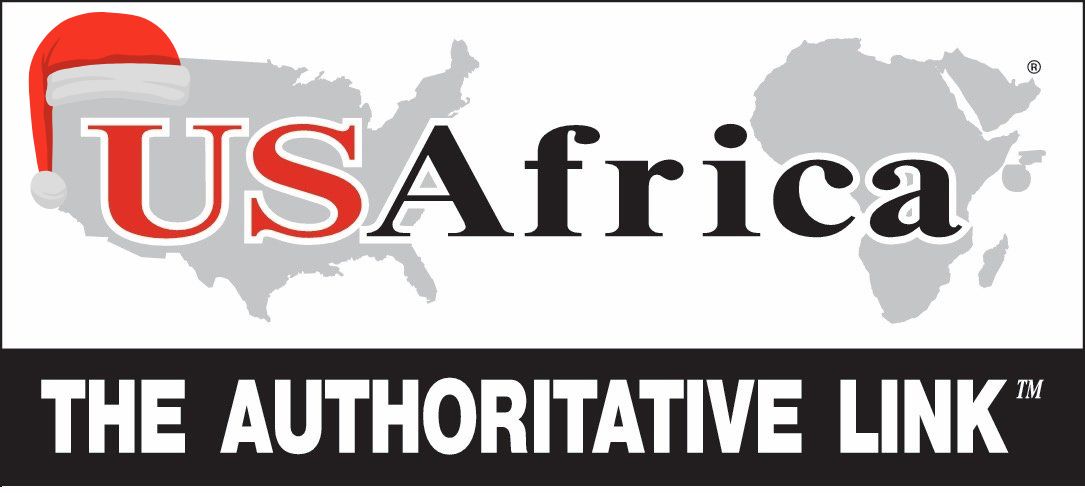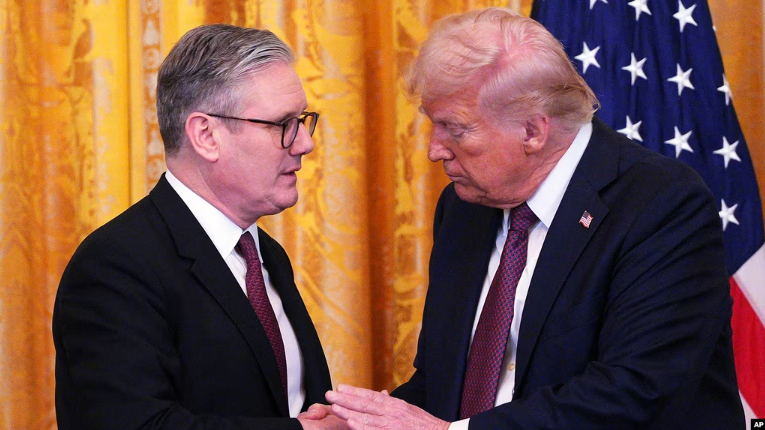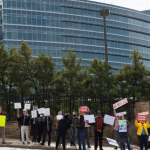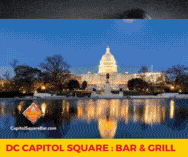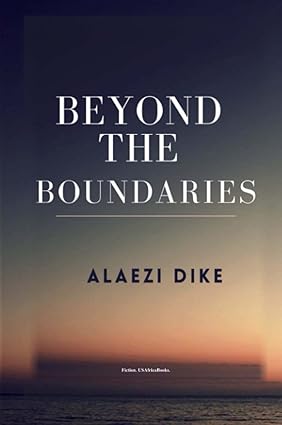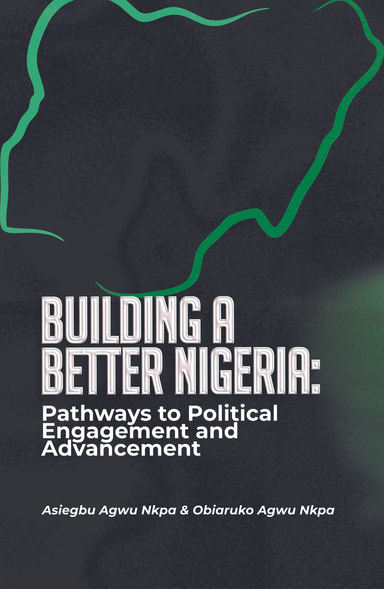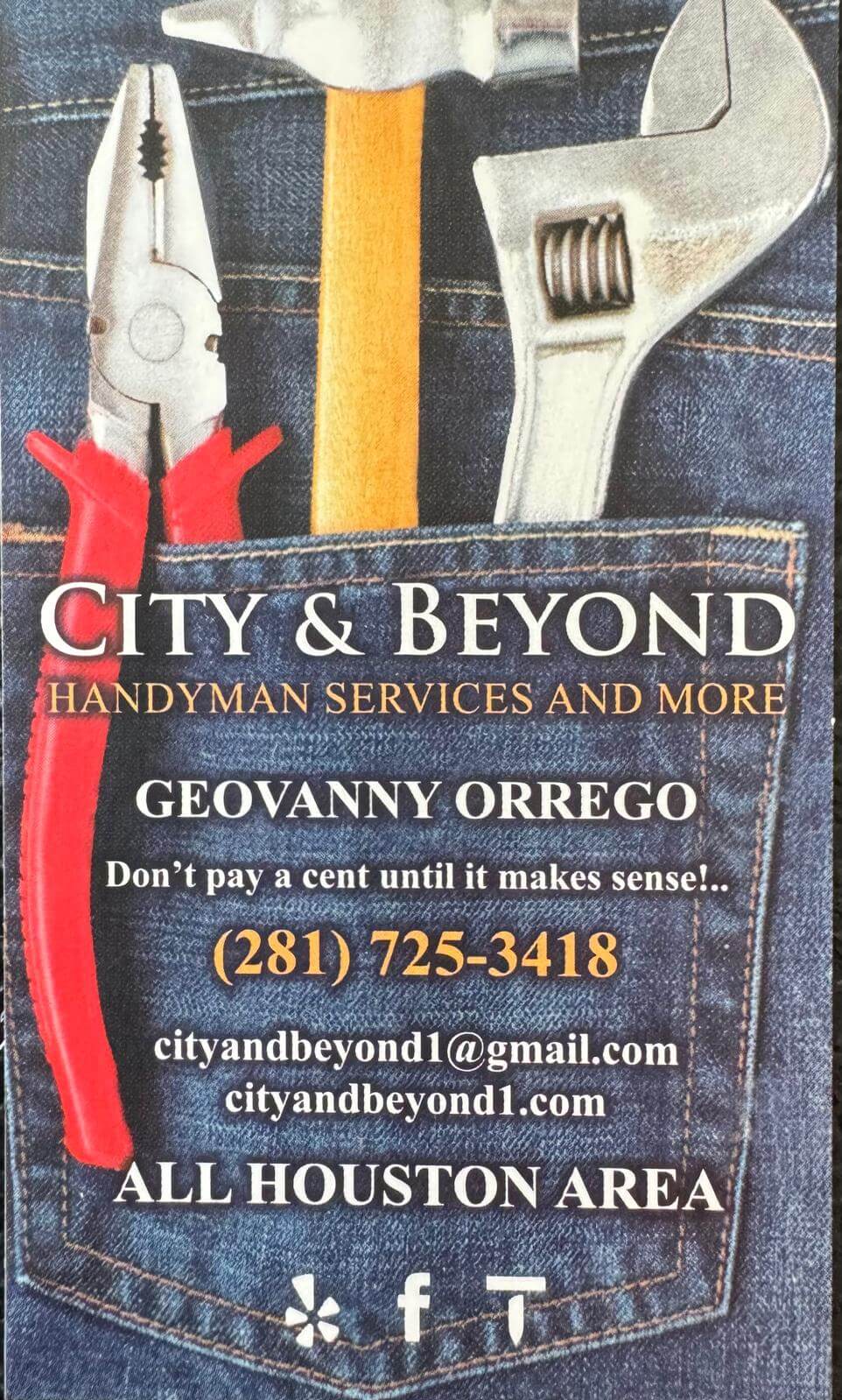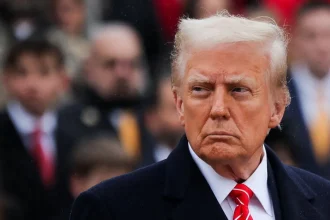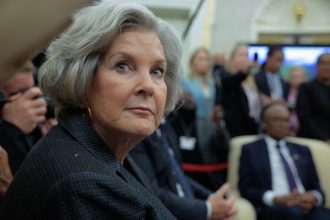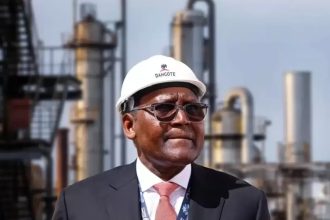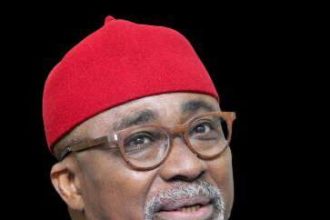(AP) – British Prime Minister Keir Starmer stated that he and U.S. President Donald Trump discussed reaching a peace agreement to end the Ukraine-Russia war, with Kyiv’s involvement and the backing of European peacekeeping forces.
Following meetings at the White House on Thursday, February 27, 2025, Starmer emphasized that any agreement must “reach a peace that is tough and fair, that Ukraine will help shape, that’s backed by strength to stop [Russian President Vladimir] Putin coming back for more.”
He underscored that no deal should “reward the aggressor,” echoing remarks made by French President Emmanuel Macron during his White House meeting with Trump earlier in the week, where he stated, “The aggressor is Russia.”
“We agreed history must be on the side of the peacemaker, not the invader,” Starmer said during a joint news conference with Trump.
Starmer vowed to work closely with European allies and reaffirmed the U.K.’s willingness to deploy peacekeeping troops alongside its partners, stating, “because that is the only way that peace will last.”
Trump’s Position on Security Guarantees
Trump, however, remained noncommittal on providing security guarantees, including a proposed U.S. “backstop” to support European peacekeepers enforcing a potential truce—one of Starmer’s key conditions.
“I don’t like to talk about peacekeeping until we have a deal,” Trump stated during the news conference. “I like to get things done. I don’t want to give it the bad luck sign.”
Trump suggested that the U.S. backstop could be provided through a separate deal with Kyiv that grants American access to Ukraine’s rare earth minerals while recouping funds allocated to Ukraine during President Joe Biden’s administration.
“It’s a backstop, you could say. I don’t think anybody’s going to play around if we’re there with a lot of workers,” Trump said earlier in the Oval Office.
During the news conference, Trump defended his decision to engage in direct negotiations with Russia without involving Kyiv or European allies, describing it as “common sense.”
“If you want peace, you have to talk to both sides,” he stated.
U.S. Negotiations with Russia
U.S. Secretary of State Marco Rubio, White House National Security Adviser Mike Waltz, and U.S. Middle East Envoy Steve Witkoff were among the officials who met with Russian representatives in Riyadh, Saudi Arabia, on February 18 to discuss the war.
Trump indicated that talks with Moscow were “very well advanced” but cautioned that the opportunity to reach a deal was limited. He expressed confidence that Putin would “keep his word” and refrain from further aggression if an agreement with Kyiv were reached.
“I’ve known him for a long time now,” Trump said, adding, “We had to go through the Russian hoax together,” referencing past U.S. investigations into his campaign’s alleged ties to Russia.
Trump’s outreach to Putin marks a stark departure from Biden’s policies, which sought to diplomatically and financially isolate Russia while insisting that peace negotiations must adhere to the principle of “nothing about Ukraine without Ukraine.”
When asked whether he would apologize to Ukrainian President Volodymyr Zelenskyy, whom he had previously referred to as a “dictator,” Trump avoided a direct answer but said, “I have a lot of respect for him [Zelenskyy].”
Zelenskyy is scheduled to visit the White House on Friday.
European Divisions Over Peacekeeping Troops
There are significant differences among European allies regarding the potential deployment of peacekeeping forces to Ukraine. The U.K. supports a French-led initiative, while other nations, including Poland, have rejected the idea.
Putin has strongly opposed any proposals to send peacekeeping troops into Ukraine, stating on Thursday that “Western elites” were attempting to disrupt the newly established dialogue between Moscow and Washington.
A senior U.S. administration official, speaking on background, expressed concerns about sending troops into Ukraine, comparing the situation to previous failed peace efforts.
“There are concerns about putting troops on the ground at a ‘post-Minsk I level of conflict, even post-Minsk II,'” the official said, referencing the 2014 and 2015 agreements that failed to end fighting between Ukraine and Russian-backed separatists.
The official suggested that the U.S. would be more open to a troop deployment if the conflict deescalates to a “functional ceasefire,” as Washington is pushing for. The type of force deployed would ultimately depend on the political agreement reached, the official added, calling it a “trade-off” that Trump and Starmer will continue to negotiate.
Starmer has stressed the need for European involvement in any peace negotiations.
“It would be very odd to have a situation where you have the burden shift to Europeans, but not the strategic responsibility and the strategic reflections,” said Gesine Weber, a fellow with the German Marshall Fund’s Geostrategy team.
Diplomatic and Economic Priorities
Starmer’s visit to Washington required careful diplomacy, as he sought to balance the U.K.’s national interests with those of European allies while engaging with the unpredictable U.S. administration.
“The most important thing is: Do these guys get along? Do they have a common vision?” said Michael O’Hanlon, a senior fellow at the Brookings Institution, referring to Trump and Starmer.
“If that’s the case, then we’re in a good position to try to promote a negotiation between Russia and Ukraine,” he told VOA.
In an effort to demonstrate unity with Trump, Starmer highlighted a planned U.K.-U.S. economic agreement focused on artificial intelligence.
During the joint news conference and in an earlier Oval Office meeting, Starmer also reiterated King Charles’s invitation for Trump to make a state visit to the U.K.—his second such invitation following his 2019 trip to London—calling it “historic” and “unprecedented.”
When asked whether King Charles had expressed concerns about Trump’s reported plans to annex Canada, a British Commonwealth nation, Starmer dismissed the question.
“I think you’re trying to find a divide between us that doesn’t exist,” he said.
Starmer is also working to secure favorable trade terms for the U.K., as looming U.S. tariffs could impact British exports. Washington has imposed 25% tariffs on steel and aluminum from European nations.
Trump suggested that Starmer had successfully made his case, stating, “He’s earned whatever they [the British government] pay him.”
Defense Spending and NATO Commitments
Trump has repeatedly pushed for NATO allies to increase defense spending to 5% of their GDP. In 2023, the U.S. spent 3.4% of its GDP on defense, according to data from the Stockholm International Peace Research Institute.
In a move seemingly aimed at satisfying Trump’s demands, Starmer announced on Tuesday that the U.K. will increase its defense budget to 2.5% of GDP by 2027, with a further increase to 2.6% the following year.
This increase will be funded by cutting Britain’s already reduced foreign aid budget to just 0.3% of GDP. Starmer also aims to raise defense spending to 3% in the next Parliament, which will begin no later than 2029 after the next general election.
